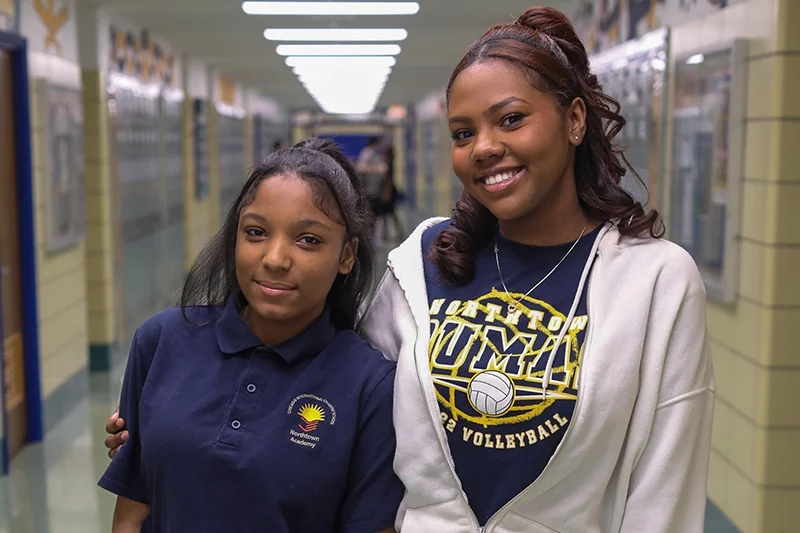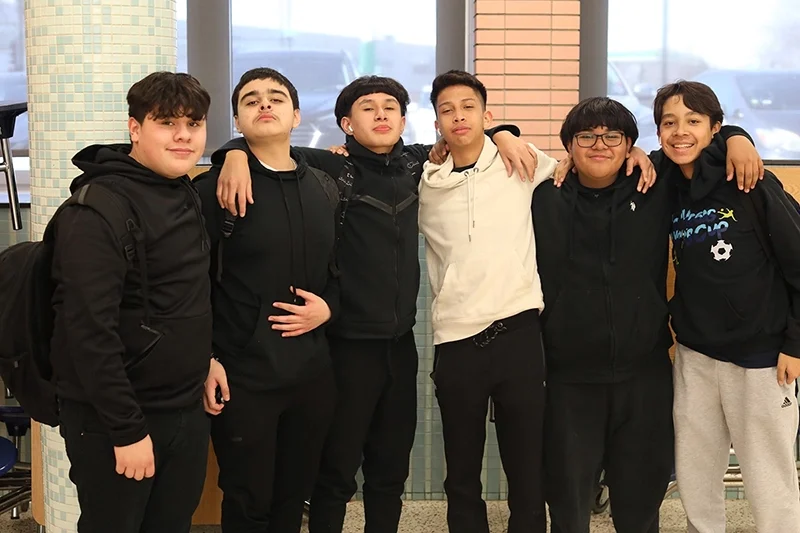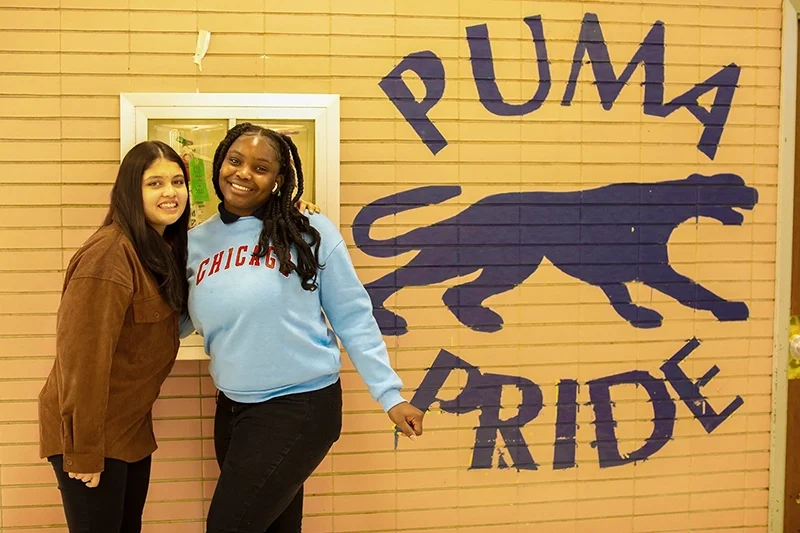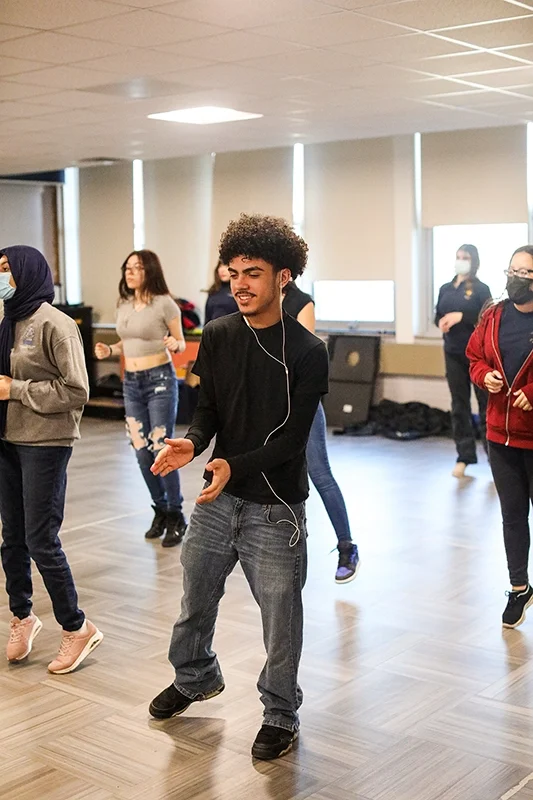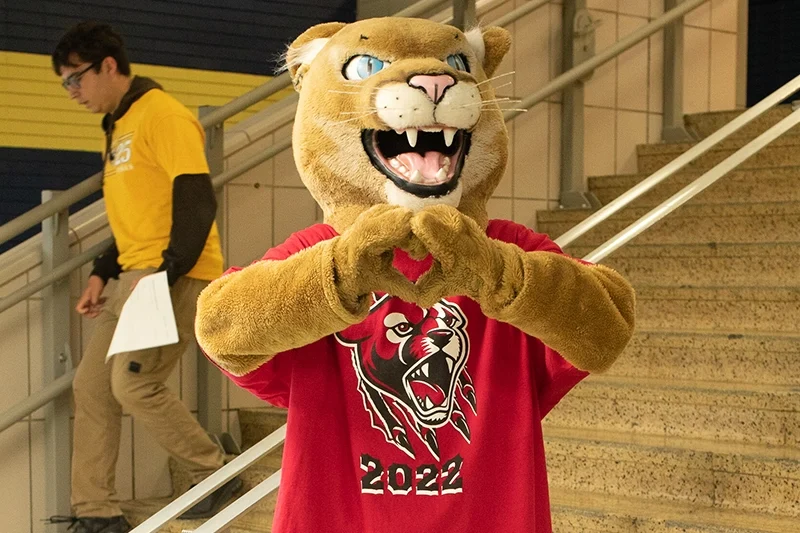cics northtown academy bullying policy
CICS and school staff asks every CICS student, with the support of their parent(s), guardian(s) and the adults at school, to commit to the following principles, which will apply to everyone on school property and at school-related activities:
1
I will not bully or intentionally harm others.
2
I will try to help anyone I suspect is being bullied or harmed.
3
I will work to include students who are left out.
4
If someone is being bullied or harmed, I will tell an adult at school and an adult at home.
addressing bullying & bias-based behaviors
The Illinois General Assembly has found that a safe and civil school environment is necessary for students to learn and achieve. Bullying and bias-based behaviors are directly contrary to this and can cause physical, psychological, and emotional harm to students and interfere with their ability to learn and participate in school activities. A safe and civil school environment is necessary for students to learn and achieve.
Chicago International Charter Schools (CICS) promotes a safe and secure learning environment for all students and takes allegations and reports of bullying very seriously. lf you suspect your child is being bullied, please contact an administrator or your child’s teacher. The sooner the school knows, the sooner the school can intervene and work to improve the situation.
Bullying can cause physical, psychological, and emotional harm to students and can interfere with their ability to learn and participate in school activities. The CICS Board, in conjunction with all CICS school staff, work to provide a non-threatening and non-violent environment for all students.
The bullying of one student by another student on school property, in school vehicles, at designated school bus stops, at school related functions or activities, or by use of data or software that is accessed through a computer, computer system, computer network, or other electronic technology or devices of a local school system is prohibited.
bullying and bias-based behaviors
Bullying and bias-based behaviors are contrary to several local, state, and federal laws and statues. This Policy protects CICS students against interpersonal harm from bullying and bias based behaviors. CICS recognizes the particular vulnerability of students with actual or perceived disabilities and those who identify as or are perceived to be lesbian, gay, bisexual, or transgender. Nothing in this Policy is intended to infringe upon any expression protected by the First Amendment to the United States Constitution or Section 3 of Article I of the Illinois Constitution.
Bullying and bias-based behaviors are prohibited:
- During any school-sponsored or school-sanctioned program or activity
- In school, on school property, on school buses or other CICS-provided transportation, and at designated locations for students to wait for buses and other CICS-provided transportation (“bus stops”)
- Through the transmission of information from a CICS computer or computer network, or other electronic school equipment
- When communicated through any electronic technology or personal electronic device while on school property, on school buses or other Board-provided transportation, at bus stops, and at school-sponsored or school-sanctioned events or activities
- When it is conveyed that a threat will be carried out in a school setting, including threats made outside school hours with intent to carry them out during any school-related or sponsored program or activity or on CICS-provided transportation
- When it is a Student Code of Conduct (“SCC”) Group 5 or 6 behavior that occurs off campus but most seriously disrupts any student’s education.
definitions of bullying
Bias-Based Behavior
“Bias-Based Behavior” is any physical, verbal, nonverbal, or other act or conduct, including communications made in writing or electronically, directed toward a member or perceived member of a protected category within the school community that is of a discriminatory or harmful nature.
Bullying
“Bullying” means any physical or verbal act or conduct, including communications made in writing or electronically, directed toward a student or students, and meets all of the following criteria.
Note: If the behavior or part of the behavior is bias-based or targeted at a member of a protected category please see the responding to bias-based behaviors guidelines.
- An observed or perceived imbalance of power exists between the person(s) engaging in the bullying behavior(s) and the targeted student(s).
- The behaviors are severe or pervasive (repeated over time), or there is a high likelihood that behaviors will be repeated. While bullying is often characterized by repeated acts, sometimes a single incident constitutes bullying depending on the severity and if other elements of bullying are present.
- The intent of the person(s) engaging in the behavior is to cause physical or emotional harm to the targeted student(s).
- The behavior has or can be reasonably predicted to have one or more of the following effects:
- Placing the student in reasonable fear of harm to the student’s person or property;
- Causing a substantially detrimental effect on the student’s physical or mental health;
- Substantially interfering with the student’s academic performance; or
- Substantially interfering with the student’s ability to participate in or benefit from the services, activities, or privileges provided by a school.
Bullying may take various forms, including without limitation, one or more of the following: harassment, threats, intimidation, stalking, physical violence, sexual harassment, sexual violence, theft, public humiliation, destruction of property, or retaliation for asserting or alleging an act of bullying.
This list is meant to be illustrative and non-exhaustive.
Cyberbullying
“Cyberbullying” means using information and communication technologies to bully. This definition includes cyberbullying by means of technology that is not owned, leased, or used by the school district when an administrator or teacher receives a report that bullying through this means has occurred. This Policy does not require a district or school to staff or monitor any non-school-related activity, function, or program.
Discrimination
“Discrimination” is treating an individual less favorably because of their actual or perceived membership in one or more of the Protected Categories.
Harassment
“Harassment” is any unwelcome verbal, nonverbal, visual, or physical conduct that is based on an individual’s actual or perceived membership in one or more of the Protected Categories, as defined in the Final New Comprehensive Non-discrimination, Harassment, Sexual Harassment, Sexual Misconduct And Retaliation Policy, that is persistent, pervasive, or severe and objectively offensive and unreasonably interferes with, limits, or denies an individual’s educational or employment access, benefits, or opportunities. Unwelcome conduct may include, but is not limited to, bullying, intimidation, offensive jokes, slurs, epithets or name calling, assaults or threats, touching, ridicule or mockery, insults or put-downs, offensive objects or pictures, messages sent via email, text or social media, sexual advances, requests for sexual favors, conduct of a sexual nature, or any other sex-based conduct.
Microaggressions
“Microaggressions” are the everyday verbal, nonverbal, and environmental slights, snubs, or insults, whether intentional or unintentional, which communicate hostile, derogatory, or negative messages to target persons based solely upon their actual or perceived Protected Category membership such as race, sexual orientation, and gender identity (Adapted from Wing Sue, Derald. “Racial Microaggressions in Everyday Life,”2010).
Protected Categories
“Protected Categories” are an individual’s actual or perceived sexual orientation, gender or sex (includes gender identity, gender expression, pregnancy, childbirth, breastfeeding, and pregnancy related medical conditions), race or ethnicity, ethnic group identification, ancestry, nationality, national origin, religion, color, mental or physical disability, age (40 and above), immigration status, marital status, registered domestic partner status, genetic information, political belief or affiliation (not union related), military status, unfavorable discharge from military service, or on the basis of a person’s association with a person or group with one or more of these actual or perceived characteristics, or any other basis protected by federal, state or local law, ordinance, or regulation.
Peer Conflict
“Peer Conflict” means disagreements and oppositional interactions that are situational, immediate, and developmentally appropriate. Conflicts arise when two or more students with relatively similar observed or perceived power have differences in opinion or perspectives. When school employees are aware of peer conflict, they are expected to guide students in developing new skills in respectful communication, personal boundaries, and peaceful conflict resolution.
Racial Discrimination
“Racial Discrimination” is any distinction, exclusion, restriction or preference based on race, color, community, national or ethnic origin which has the impact of nullifying or impairing the recognition, enjoyment or exercise, of a right to an equitable educational experience and fundamental freedoms in the social, economic, cultural, political, and linguistic aspects of school, school and district life (Adapted from United Nations, 2019).
Retaliation
“Retaliation” means any form of intimidation or adverse action or change to educational program or activity taken against a student for having made a complaint or report of bullying or bias based behaviors whether made internally or externally with federal, state, or local agency, or for participating, aiding, or refusing to participate in an investigation, proceeding, or hearing related to a report or complaint of bullying or bias based behaviors.
Restorative Measures
“Restorative Measures” means a continuum of school-based alternatives to exclusionary discipline, such as suspensions and expulsions that are adapted to the particular needs of the school and community, contribute to maintaining school safety, protect the integrity of a positive and productive learning climate, teach students the personal and interpersonal skills they will need to be successful in school and society, serve to build and restore relationships among students, families, schools, and communities, and reduce the likelihood of future disruption by balancing accountability with an understanding of students’ behavioral health needs. Restorative practices are ways of pro-actively developing relationships and community, as well as repairing community when harm is done. After conflict or harm, Restorative Practices provide a way of thinking about, talking about, and responding to issues and problems by involving all participants to discuss their feelings and opinions, identify what happened, describe how it affected everyone, and find solutions to make things better.
preventing bullying and bias-based behaviors
All CICS principals and staff shall work to develop safe and supportive school environments that prevent bullying and bias-based behaviors through:
- Developing supportive school climate strategies, including clear expectations and share agreements to guide interactions between students, and between staff and students.
- Teaching all students social and emotional skills and establishing classroom and school-wide practices that promote relationship-building, including teaching all school stakeholders to speak out when they see or hear bullying, degrading language, and bias or prejudice.
- Establishing predictable responses and effective disciplinary practices that address root cause, teach skills, build empathy, and repair harm. Ensure all students, staff, and stakeholders know how your school plan to respond to bullying and harassment.
- Committing to welcoming and inclusive practices that center belonging, affirm cultural differences, and address and support the transformation of bias-based harm.
intervening to address bullying
Responsibilities of CICS Employees and Contractors
All CICS employees and contractors, including security officers, lunchroom staff and bus drivers, who witness incidents of bullying or school violence or who possess reliable information that would lead a reasonable person to suspect that a person is a target of bullying, must:
- Intervene immediately in a manner that is appropriate to the context and ensures the safety of all people involved
- Report the incident of bullying or retaliation to the Principal/Designee as soon as practicable, but within 24 hours, on the CICS Bullying Complaint Form (Attachment A); and
- Cooperate fully in any investigation of the incident and in implementing any safety plan established by the Principal/Designee.
- School based staff who witness or become aware of must report any and all instances of bias based behaviors to the principal who must complete an Aspen Report and answer in the affirmative the question related to bias-based and discriminatory behavior within one school day.
- Staff unable to access Aspen or for any questions or assistance, may contact the CICS (312-651-5000) or email bullyingreport@chicagointl.org
No student who witnesses bullying may stand by or participate in the bullying, but must notify an adult at school and an adult at home as quickly as practicable. Any parent or guardian who witnesses or is notified of bullying has an obligation to advise the Principal or SMO Staff as quickly as possible. Reports can be submitted to the CICS Principal (contact information for the Director/Designee is available on the CICS Campus website), or by contacting CICS (312-651-5000) or emailing BullyingReport@chicagointl.org. No disciplinary action will be taken on the sole basis of an anonymous report.
Bullying report template can be found at the top of this page or in the left-hand menu. Every report MUST be captured in ASPEN for reporting purposes in accordance with state law. No disciplinary action will be taken on the sale basis of an anonymous report. Parent(s) and/or guardian(s) are asked to monitor their children’s personal devices at home to ensure that they are not engaging in bullying and/or cyber-bullying, via Facebook, Instagram and other social media.
Reporting Process
Investigation
- Ensure safety. The Principal or his/her designee will provide immediate support to any targeted student(s) to ensure safety.
- The Principal shall select a campus representative knowledgeable about bullying prevention and intervention to perform the investigation.
- Investigation of a bullying incident to the maximum extent possible shall be initiated within five school days of receipt of a report and completed within 1O school days, unless the Principal grants an additional 5-day extension due to extenuating circumstances. The Principal/Designee shall document the extension in the investigation report and shall notify the parties involved. Designee shall notify the Principal upon completion of the investigation reports as soon as possible.
- The investigation shall include:
- Identifying the alleged perpetrator(s), target(s) and bystander(s), as well as any adult who witnessed the incident or may have reliable information about it.
- Conducting an individual interview in a private setting with the alleged perpetrator and target. The alleged perpetrator and target should never be interviewed together or in public. Individual interviews may also be conducted in private with student and adult bystanders.
- Determining how often the conduct occurred, any past incident or continuing pattern of behavior, and whether the target’s education was affected.
- Assessing the individual and school-wide effects of the incident relating to safety, and assigning school staff to create and implement a safety plan that will restore a sense of safety far from the target and other students who have been impacted.
- When appropriate, preparing a Misconduct Report prepared by the campus identifying his/her recommendation for individual consequences.
- Document the details of the investigation.
- All relevant information shall be transmitted into PowerSchool and Aspen for tracking purposes in accordance with the guidelines, including information identifying the areas of the Campus where bullying occurred, the type of bullying utilized and any bystander intervention or participation.
Notification
On the same day the investigation is initiated, consistent with federal and state laws and rules governing student privacy rights, the Principal/Designee shall report to the parent/ legal guardian of all known involved students, via telephone, personal conference and/or in writing, the occurrence of any alleged incident of bullying, and shall document these notifications in the Incident Report in PowerSchool.
Upon notifying the parent/legal guardian of the occurrence of any alleged incident of bullying, the Director/Designee shall also discuss with the parent/legal guardian, as appropriate, the availability of social work services, counseling, school psychological services, other interventions and restorative measures.
When the investigation is complete, the Director/Designee shall notify the parents/legal guardians of all students involved of the outcome of the investigation. Parents/legal guardians of the students who are parties to the investigation may request a personal conference with the school director/Designee to discuss the investigation, the findings of the investigation, the actions taken to address the reported incident of bullying, and any resources available in or outside the school to help the students address the underlying reasons for the bullying.
lf the investigation results in the imposition of consequences, the Director/Designee may advise the parent/legal guardian of students other than the perpetrator that the CICS Student Code of Conduct was followed. S/he may not advise them of the specific consequence imposed, as that would violate the confidentiality of school-record information required by law. lf the target or perpetrator is a student with a disability, the school shall consider convening the IEP Team to determine whether additional or different special education or related services are needed to address the student’s individual needs and revise the IEP accordingly.
Assigning Interventions and/or Consequences
Many peer conflicts can be resolved immediately and do not require reporting or creation of a Misconduct or Incident Report. lf, however, a conflict is ongoing and meets the definition of bullying, the investigation procedures in this policy must be followed. Schools must respond to bullying in a manner tailored to the individual incident, considering the nature of the behavior, the developmental age of the student, and the student’s history of problem behaviors and performance. CICS campuses should avoid using punitive discipline (detention, suspensions, and expulsions) if any other method or consequence can be used with fidelity.
When an investigation determines that bullying occurred, the Principal/Designee shall explain the consequences in a non-hostile manner and shall impose any consequence immediately and consistently. The Principal/Designee shall keep communicating and working with all parties involved until the situation is resolved.
Some key indicators of resolution include:
- The perpetrator is no longer bullying and is interacting civilly with the target.
- The target reports feeling safe and is interacting civilly with the perpetrator.
- School staff notices an increase in positive behavior and social-emotional competency in the perpetrator and/or the target.
- School staff notices a more positive climate in the areas where bullying incidents were high.
CICS prohibits reprisal or retaliation, in any form, against any person who reports an act of bullying or harassment or cooperates in an investigation. The consequences and appropriate remedial action for a person who engages in reprisal or retaliation shall be determined by the Director/Designee after consideration of the nature, severity and circumstances of the act.
CICS prohibits any person from falsely accusing another as a means of bullying or harassment. The consequences and appropriate remedial action for a person found to have falsely accused another as a means of bullying or harassment may include, but are not limited to, positive behavioral interventions and disciplinary action when deemed necessary.
Referrals
Upon completion of the investigation, the Principal/Designee shall consider referring students who bully to positive-behavior small-group interventions (for anger management, trauma or social skills), social work services, restorative measures, social-emotional skill building, counseling, community-based services or school psychological services within the school, if possible, to reinforce the behavioral expectation they violated and increase their social-emotional competency.
Following a bullying incident, school staff will be assigned to create and implement a plan that will restore a sense of safety for the targeted student and other students who have been impacted. The team will then determine any other interventions that may be appropriate. Upon completion of the investigation, the Principal/Designee shall consider asking a school mental health professional to refer these students to individual or group therapy where they can openly express their feelings about their bullying experience, social-skills training and/or groups where they can practice assertiveness and coping mechanisms, or social work, counseling or school psychological services available within the school.
Policy Evaluation
This Policy is based on the engagement of a range of school stakeholders including students, parents and staff. This policy is consistent with the policies of the CICS Board, charter school, or non-public, non-sectarian elementary or secondary school. Every two years, CICS will conduct policy evaluation to assess the outcomes and effectiveness of this policy that includes, but is not limited to, factors such as the frequency of victimization; student, staff, and family observations of safety at a school; identification of areas of a school where bullying occurs; the types of bullying utilized; and bystander intervention or participation.
report bullying
The reporter may remain anonymous, but no discipline will be imposed based solely upon filing an anonymous report. Please fill this form to the best of your ability.

